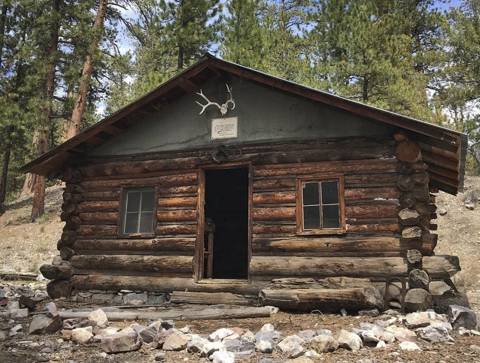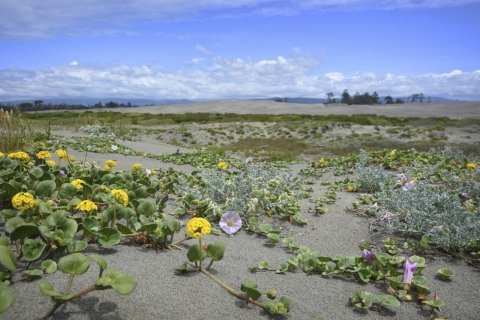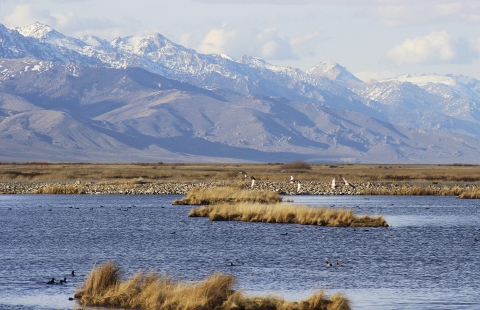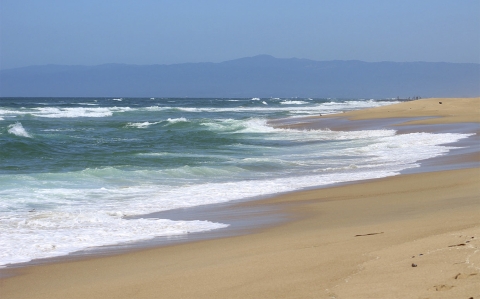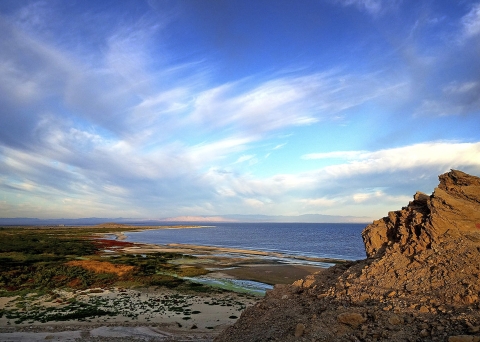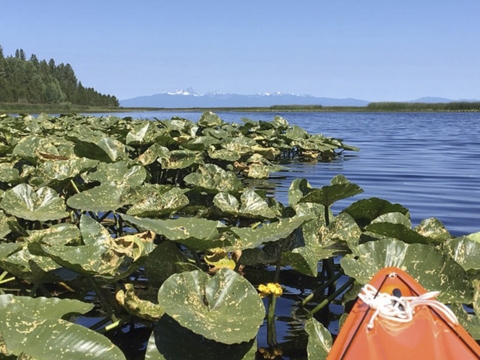Going on vacation and need a place to beat the crowds, enjoy the outdoors and see something unusual or out of the ordinary? These hidden gems in the U.S. Fish and Wildlife Service’s National Wildlife Refuge System will get you off the beaten path. Whether you like beaches, deserts or forests, you may be surprised how close these eight marvelous finds are to you.
1. Desert National Wildlife Refuge: Hidden Forest Cabin
Where: The 1.5 million-acre Desert National Wildlife Refuge - the largest refuge in the lower 48 states - is located approximately 20 miles northwest of Las Vegas, Nevada. Deep within the Sheep Range lies Deadman Canyon, where intrepid hikers can trek to a historic cabin fed by a small spring nestled high in the Ponderosa Pine Forest.
Reward: The Hidden Forest Cabin, which is on the national register of historic places, is well over 100 years old. Its origins remain murky - some say it was an old bootlegger cabin while others claim a game warden lived here. Either way, the spot is an impressive sight that offers visitors unexpected solitude and a welcome respite.
2. Humboldt Bay National Wildlife Refuge: The Dunes Units
Where: Tucked behind the “Redwood Curtain,” the globally rare dunes and dune forest of Humboldt Bay National Wildlife Refuge Complex in Northern California are juxtaposed between coastal redwood forests and the expansive Pacific Ocean.
Reward: Blooming dune flora, which turn the already surreal landscape into an artwork of pastels.
3. Modoc National Wildlife Refuge: Wigeon Pond Trail
Where: Located in a region of California that few outside the area know about, Modoc National Wildlife Refuge is found on the extreme northeast corner outside the town of Alturas, at the foot of the Warner Mountains.
Reward: A variety of wildlife are readily observable from both the Wigeon Pond Trail and auto tour route. This refuge may also be the best place to see greater sandhill cranes and their colts (young of the year).
4. Ruby Lake National Wildlife Refuge: Birder’s paradise
Where: The Ruby Lake National Wildlife Refuge lies at the southern end of Ruby Valley in northeast Nevada. Flanked on the west by the rugged and scenic Ruby Mountains, it is one of the most remote refuges in the lower 48 states.
Reward: Identified as one of the 500 “Globally Important Bird Areas” by the American Bird Conservancy, Ruby Lake National Wildlife Refuge serves as one of the most critical waterfowl nesting areas in the Great Basin and intermountain West. The South Marsh supports the highest concentration of nesting canvasbacks in North America.
5. Salinas River National Wildlife Refuge: Solitude
Where: Salinas River National Wildlife Refuge is 11 miles north of Monterey, California, where the Salinas River empties into the Pacific Ocean. This 365-acre refuge along the Pacific Flyway for migratory birds showcases a variety of habitats from coastal grasslands to salt marsh salt marsh
Salt marshes are found in tidal areas near the coast, where freshwater mixes with saltwater.
Learn more about salt marsh to coastal sand dunes and a beach.
Reward: Enjoy a quiet stroll on the trail or beach and get a glimpse of colorful native plant blooms and rare wildlife, away from crowds.
6. San Joaquin River National Wildlife Refuge: Pelican Nature Trail
Where: Located in Stanislaus County just off of CA-132 and about 20 minutes from Modesto, California, the Pelican Nature Trail at San Joaquin River National Wildlife Refuge offers visitors a choice of three connected loops; a short, one-mile-walk for the first loop or four-mile-walk if you explore all three loops. Access the trailhead on Dairy Road.
Definition of riparian habitat or riparian areas.
Learn more about riparian brush rabbit all spotted together on the Pelican Nature Trail at San Joaquin River National Wildlife Refuge in California. Credit: Rick Kimble/USFWS
Reward: Guests may see an endangered riparian brush rabbit among other wildlife. The first loop leads along a restored wetland that features raised “bunny mounds” that provide refuge for these rabbits during San Joaquin River flood events. Further down the trail, river otters and beavers are known to make guest appearances.
7. Sonny Bono Salton Sea National Wildlife Refuge: Rock Hill Trail
Where: Sonny Bono Salton Sea National Wildlife Refuge is located at the southeastern edge of the Salton Sea (California’s largest lake) in Imperial County, California, within the Colorado Desert region of the Sonoran Desert. This refuge has some unique natural, geologic and cultural features worth checking out even in the heat of summer.
Reward: An early morning or evening walk on the Rock Hill Trail is great for birding and wildlife viewing. Some key species to look out for in the summer are the gull-billed terns and black skimmers that arrive to nest in managed ponds. Also, burrowing owls are easily spotted day and night on the refuge. The trail takes you to the top of one of California’s youngest volcanoes and provides stunning views of the Salton Sea set against the Santa Rosa Mountains.
8. Upper Klamath National Wildlife Refuge: Canoe Trail
Where: The Upper Klamath National Wildlife Refuge’s Canoe Trail is a marked 9.5 mile journey through a large freshwater marsh surrounded by upland forest accessed from either Rocky Point or Malone Springs boat launch. From Klamath Falls, head west 25 miles on Hwy 140, turn north onto West Side Road and follow the signs to Rocky Point boat launch. Malone Springs boat launch is four miles past the Rocky Point boat launch.
Reward: Fully immerse yourself in nature’s solitude as you meander through 15,000 acres of freshwater marsh on the self-guided Canoe Trail tour. The trail has four segments: Recreation Creek, Crystal Creek, Wocus Cut and Malone Springs. Each offer a different and unique view of the Upper Klamath marsh. Float through in canoes or kayaks, and you’ll have a good chance viewing wildlife living their best lives.
So whether you’re in the mood for the coast, a desert or a forest, these eight gems have you covered for this summer.


